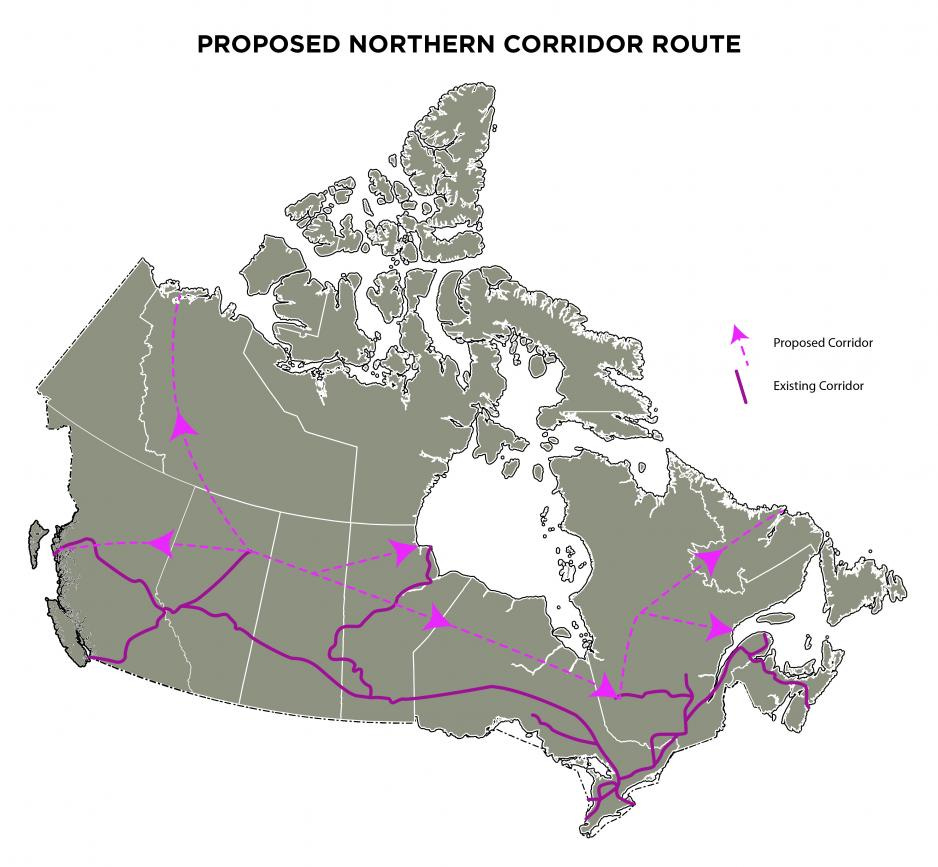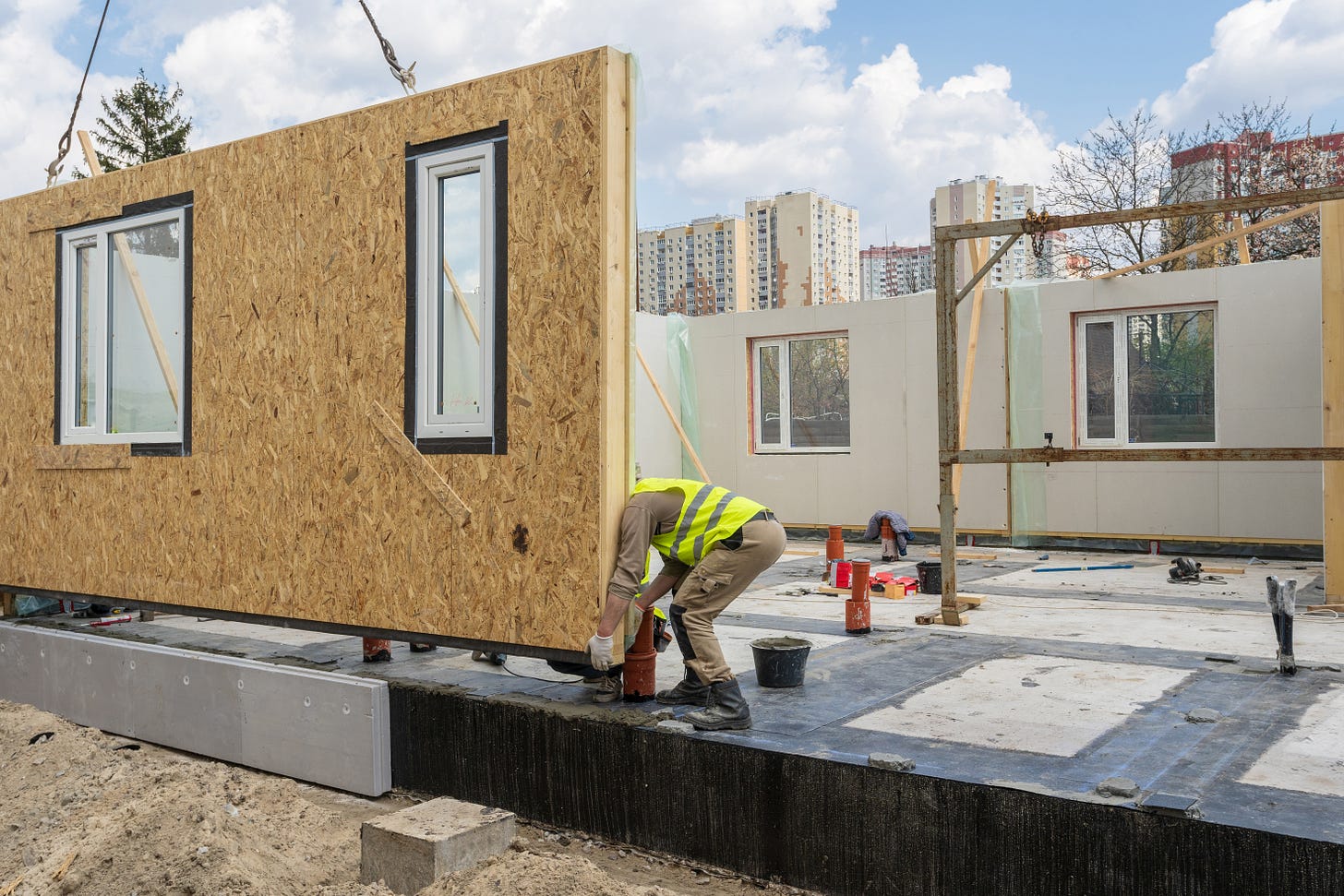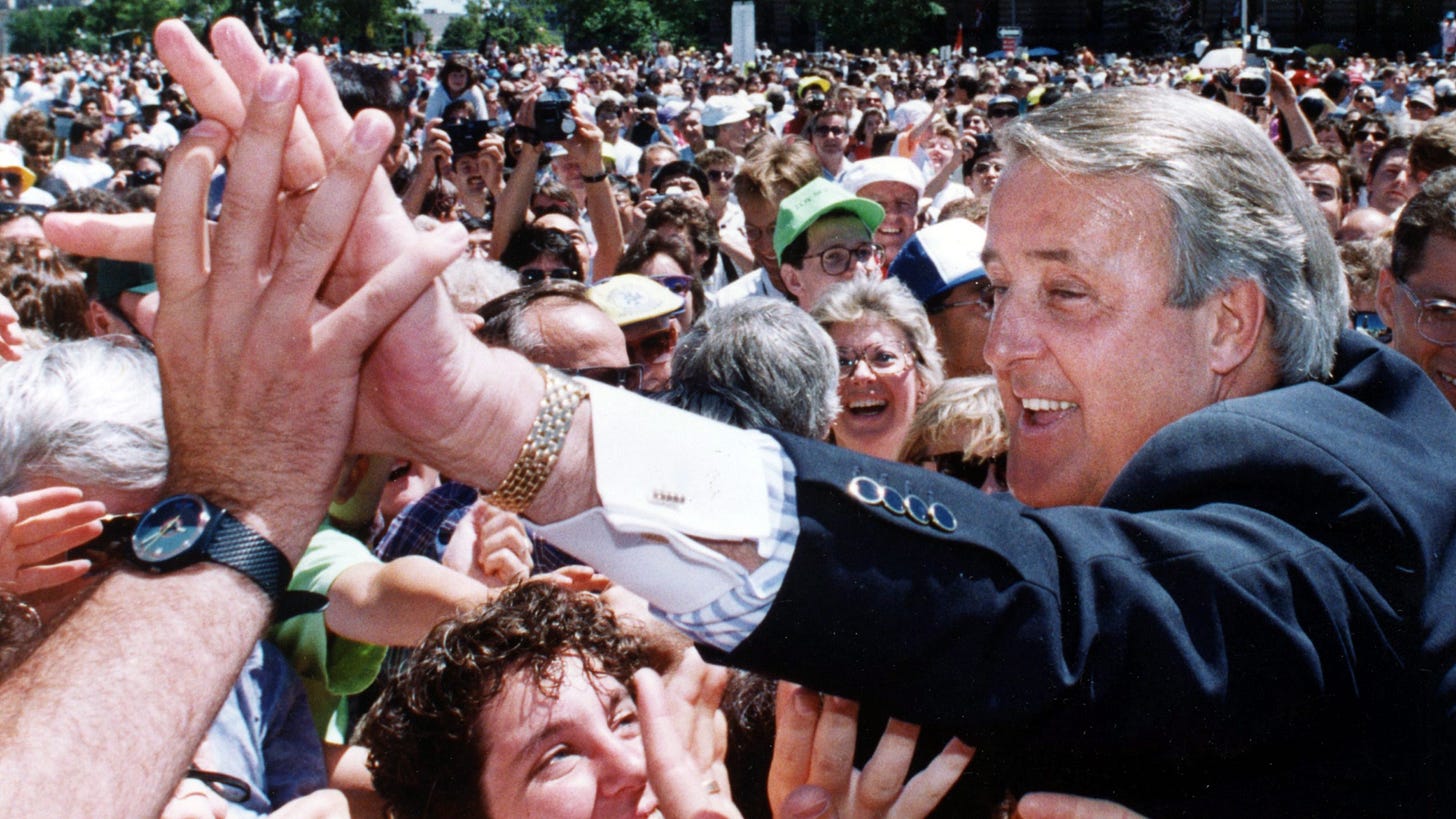Return of the Red Tories: Mark Carney, Liberals, and a Progressive Conservative Revival
As Canada enters the writ period, Carney's leadership signals a shift toward centrist pragmatism, echoing the legacy of the Progressive Conservative tradition.
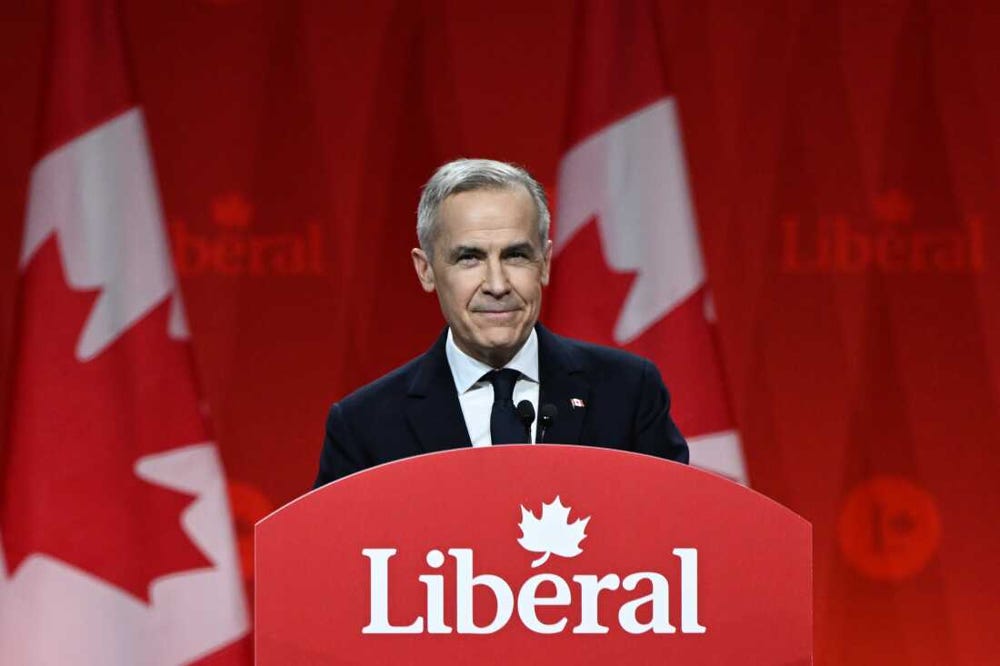
Canada may be on the cusp of a political renaissance. Mark Carney – former central banker turned Liberal champion – is offering a bold new platform that looks surprisingly familiar. In tone and substance, Carney’s Time to Build agenda harkens back to Canada’s Red Tory tradition: a blend of fiscal prudence, social compassion, nation-building ambition, and robust sovereignty. This is the heritage once embodied by Progressive Conservative leaders like Joe Clark and Brian Mulroney, and even echoed by centrist Liberals such as Jean Chrétien and Pierre Elliott Trudeau. Carney’s policies – from massive housing investments and infrastructure corridors to increased military spending, Arctic sovereignty initiatives, Indigenous partnerships, and energy independence – positively revive that tradition for the 21st century.
Crucially, this platform speaks to politically centrist Canadians who feel homeless in today’s polarized landscape. Many have been alienated by a Conservative Party that has lurched rightward and a Liberal Party that, under Justin Trudeau, drifted left. Carney aims to fill that void with a unifying vision firmly rooted in Canada’s pragmatic progressive-conservative heritage. It’s time to build, he declares – not just houses and highways, but a nation where prosperity and unity go hand in hand.
Fiscal Prudence Meets Social Compassion
At the heart of Carney’s agenda is an insistence on responsible government finances paired with an active social conscience. He has proposed a sweeping overhaul of federal budgeting: separating operating spending from capital investments, balancing the day-to-day budget within three years, and reining in waste (Economic Pillars for Change). This fiscal discipline is not an end in itself but a means to “spend less, and invest more,” as Carney puts it (Mark Carney government will spend less and invest more). By saving on inefficiencies and “maximizing outcomes…while minimizing dollars spent”, his government would create room for targeted tax relief and major new investments in Canada’s future.
Importantly, Carney’s cost-conscious approach comes without the harsh austerity of right-wing doctrine. “Rather than [Pierre] Poilievre’s irresponsible ‘slash and burn’ approach, our approach will be disciplined, ambitious and high-impact,” Carney promises. In classic Red Tory fashion, fiscal prudence is coupled with compassionate investment. The billions saved from cutting waste would be channeled into nation-building projects and social priorities that strengthen the country. For example, Carney pledges to “catalyze transformative new investment” in areas like housing, clean energy, and infrastructure – all while ensuring “funds are allocated where they best serve Canadians.” (Economic Pillars for Change)
One centerpiece is his plan to supercharge housing construction and tackle Canada’s affordability crisis. Carney calls it “our time to build” homes at a scale not seen in generations (Make Housing More Affordable). His goal is to double the current pace of home-building to about 4 million new homes in the next decade, working with provinces and cities to break through zoning and permitting logjams. This agenda isn’t just about market economics – it’s infused with social purpose. Carney vows to expand non-profit and co-op housing, address Indigenous housing needs in partnership with First Nations, Inuit and Métis communities, and ensure that “every individual has a safe, stable place to call home”. In other words, housing is treated as both an economic imperative and a social mission. This blend of market pragmatism and social compassion is straight out of the Red Tory playbook that balanced free enterprise with a strong social safety net.
Carney’s approach here mirrors the centrist legacy of Liberal Prime Minister Jean Chrétien (who eliminated deficits in the 1990s while expanding programs like the Child Tax Benefit) and Progressive Conservative leaders like Robert Stanfield and Joe Clark (who championed wage and price controls and multiculturalism alongside fiscal restraint). It’s a rejection of false choices. Canadians, Carney believes, don’t have to choose between sound finances and caring governance – we can have both. “Our guiding questions will be simple: Does it work well? Can it work better for less?” (Economic Pillars for Change) he says, embodying a common-sense ethos that would make old Red Tory stalwarts proud.
Nation-Building Ambition: Homes, Highways, and One Canada
The Time to Build platform is nothing if not nation-building in scope. Carney invokes a classic Canadian idea: large-scale projects that unite the country and drive prosperity. His plan calls for investing in critical infrastructure on a level reminiscent of Sir John A. Macdonald’s railway or Brian Mulroney’s Canada-U.S. free trade pact – but updated for today’s needs. Carney wants to create “one Canadian economy instead of 13,” tearing down internal trade barriers and stitching the country closer together (Mark Carney Government to Unite Canadian Economies). The payoff from truly free interprovincial trade, he notes, could be enormous – boosting Canada’s GDP by up to $200 billion (4–8%) in the long run, equivalent to $3,000–$5,000 per person. That’s a nation-building dividend no Canadian should ignore.
To get there, a Carney government would immediately convene provincial Premiers in a First Ministers’ meeting with two goals: forge a pact to eliminate interprovincial trade barriers (so Canadians can sell goods and work anywhere in Canada freely), and identify “projects of national interest” that cross provincial lines so they can be fast-tracked (Mark Carney Government to Unite Canadian Economies). This cooperative federalism harkens back to the spirit of Confederation – or, more recently, to the teamwork of First Ministers in the 1960s development of national Medicare and the 1980s constitutional accords. Carney’s message is that working together, Canada’s governments can achieve big things once again. “Canada is stronger when it is united,” he says. “We are masters of our own economic destiny…we need to create one Canadian economy instead of 13.”
What are those nation-building projects Carney is so eager to launch? The list spans housing, transportation, energy and more. On top of the 4 million homes push, he envisions a National Trade and Energy Corridor strategy – upgrading and expanding highways, rail lines, ports and pipelines to better connect our regions and get Canadian goods to market. His platform calls for developing economic corridors that can unlock growth, especially in under-served regions like the Prairies, Atlantic Canada and the North (Creating One Canadian Economy). For example, Carney would designate new “Critical Infrastructure Corridors” (building on successes like the Trans-Canada Highway) to pre-approve routes for multi-use national projects. Imagine expedited construction of a cross-country electricity grid, or a coast-to-coast pipeline/transmission line corridor that carries both Western energy and Eastern clean hydro power. These ideas echo a long-standing Red Tory belief in activist federal infrastructure policy – from John Diefenbaker’s northern roads to Mulroney’s Pacific and Atlantic gateway initiatives.
Carney also plans to speed up project approvals dramatically for anything deemed in the national interest. Reviews that drag on nearly a decade today would be capped at two years for major infrastructure. A federal “one-window” permitting process would cut duplication and work with provincial assessments to avoid red tape (Creating One Canadian Economy). Even as environmental and Indigenous consultations remain mandatory, Carney wants a culture shift from “Why build?” to “How do we build faster?”. This is nation-building urgency at its finest – reminiscent of how Canada in the 1950s and ‘60s could build the Trans-Canada Highway and St. Lawrence Seaway in a flash of patriotic will. “By accelerating decision-making on major projects, Canada will lower costs, attract investment, create jobs, and build the strongest economy in the G7,” Carney argues (Mark Carney Government to Unite Canadian Economies). It’s an argument both pragmatic and idealistic, very much in line with Canada’s progressive-conservative tradition of getting big things done.
Notably, Carney’s nation-building ethos extends to digital and human infrastructure as well. He emphasizes removing barriers so that “anyone can work anywhere” in Canada – meaning recognition of professional qualifications across provinces and a truly mobile labour market (Creating One Canadian Economy). And he links infrastructure to inclusion: investments in rural broadband, northern airports, and community facilities to ensure no region is left behind. All told, this platform channels the “One Canada” ideal championed by former Prime Minister Pierre Trudeau (who famously fought for a strong central government and pan-Canadian identity) – but updates it with the market-friendly pragmatism of a Bay Street executive. It’s nation-building for the modern era, designed to appeal to those who want Canada to dream big again.
Economic Sovereignty and Energy Independence
A striking theme in Carney’s platform is economic sovereignty – fortifying Canada’s ability to stand on its own feet in a challenging world. Partly this reflects circumstance: a newly aggressive superpower in our midst. With Donald Trump back in the U.S. presidency threatening tariffs and even musing about annexation, Carney stresses that Canada “must be masters of our own economic destiny.” (Mark Carney Government to Unite Canadian Economies) A key plank of his response is achieving greater self-reliance in energy and critical industries.

Carney proposes a “major expansion in both conventional and clean energy systems to reduce our dependence on the United States.” (Mark Carney government will spend less and invest more) In plain language, that means developing more Canadian oil, gas, hydro, and renewable energy at home – and building the pipelines, power lines, and facilities to use or export it – so that we are never hostage to a single export market or foreign supplier. It also means investing in emerging industries like critical minerals (for EV batteries, solar panels, etc.) where Canada has resources in abundance. His northern infrastructure plan explicitly notes the need to get critical minerals and agricultural products out of remote areas to global markets (Creating One Canadian Economy). This focus on resource and industrial development with a nationalist bent would ring familiar to an earlier generation: it recalls Progressive Conservative economic nationalism, such as Diefenbaker’s vision of the “New National Policy” or even elements of Pierre Trudeau’s 1980 National Energy Program (which sought Canadian control over oil resources). The difference is Carney emphasizes partnership with provinces and the private sector, rather than unilateral federal mandates, to achieve energy security.
Another aspect of Carney’s sovereignty push is trade diversification. He argues that by strengthening our internal market and building trade corridors to tidewater, Canada can better withstand U.S. protectionism and pivot to new global customers. His budget plan highlights funding for “port, rail and infrastructure for new trade corridors with major new trade partners.” (Mark Carney government will spend less and invest more) This implies boosting capacity to ship Canadian goods to Asia, Europe, and beyond – for instance, expanding port facilities on the Atlantic and Pacific and improving rail links. It’s a prudent hedge when our top trading partner grows unreliable. In the Mulroney era, free trade with the U.S. was seen as Canada’s ticket to prosperity; in the Carney era, balancing that reliance with other partnerships (while still pursuing free trade internally) is the new priority.
Underpinning all of this is Carney’s core conviction that Canada must build and invest its way to greater independence. “With our economy under threat from our largest trading partner, Canada needs a responsible new framework to catalyze transformative investment in building Canada’s future,” he explains (Mark Carney government will spend less and invest more). His answer is to double down on domestic capacity – whether that’s housing to accommodate our people, energy projects to power our industries, or innovation in areas like AI and clean tech to keep Canada competitive. In effect, he’s updating the Red Tory ethos of economic self-determination for a globalized century: not retreating behind tariffs or state corporations, but strategically investing in national strengths so Canada can hold its own on the world stage. “We are masters of our own economic destiny,” Carney repeats (Mark Carney Government to Unite Canadian Economies) – an almost Diefenbaker-like cry of economic patriotism, yet married to a very Liberal confidence in trade and growth. It’s a potent message for voters who worry about Canada’s vulnerability in an uncertain world.
Strong Defense and Arctic Sovereignty
No Red Tory revival would be complete without a robust view of Canada’s military and sovereignty, and here Carney does not disappoint. He has sharply criticized Canada’s recent neglect of defense and has unveiled a plan to rebuild and reinvest in the Canadian Armed Forces. The goal is twofold: meet our international commitments and, more crucially, defend Canada’s own vast territory – especially the Arctic. “Now more than ever, we need to secure Canadian sovereignty by strengthening our military,” Carney says, noting the world has become more dangerous and divided (Liberals release plan to rebuild, reinvest, and rearm the Canadian Armed Forces | Liberal Party of Canada). It’s a clear nod to longstanding Progressive Conservative doctrine that a strong national defense is essential to protect Canada’s interests and project our values.

Carney’s defense platform includes substantial new investments, with a promise to reach the full 2% of GDP NATO spending target by 2030 (or sooner, if possible) (Liberals release plan to rebuild, reinvest, and rearm the Canadian Armed Forces | Liberal Party of Canada). But unlike simplistic calls to “just spend more,” Carney emphasizes how and where the money will be spent: in Canada, on Canadian priorities. “We’re going to prioritize investments here in Canada, and every dollar…will be spent wisely and effectively,” he insists. In practice, that means building up Canadian military capacity and Canadian industry. For example, his plan would expand the Navy with new submarines and heavy icebreakers to defend the North , and fully fund the National Shipbuilding Strategy to construct Arctic patrol ships and other vessels domestically (supporting over 21,000 Canadian shipyard jobs) (. He also would integrate the Coast Guard into our defense strategy with a new mandate to police and protect our Arctic waters and coastline (Liberals release plan to rebuild, reinvest, and rearm the Canadian Armed Forces | Liberal Party of Canada). All of this strengthens Canada’s hand in the Arctic, where melting ice and geopolitical rivalry (from Russia, and even U.S. interest in resources) make sovereignty more vital than ever.
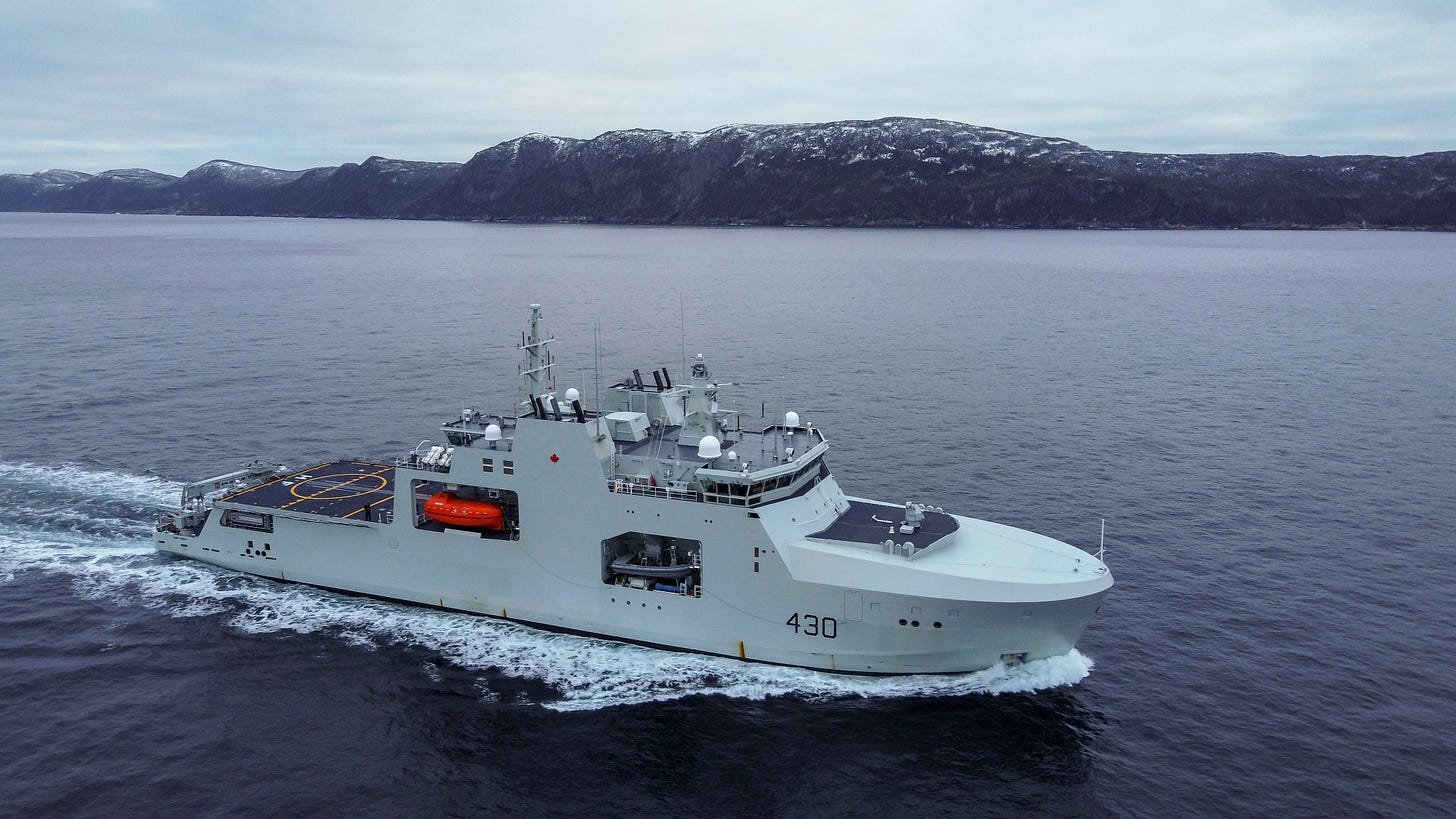
Indeed, Carney squarely focuses on Arctic sovereignty as a top defense priority – a classic Red Tory concern. Speaking in Nunavut, he announced plans to boost the military’s year-round presence in the Arctic with $420 million for northern operations and training (Canada's Carney vows to expand presence in mineral-rich Arctic | Reuters). Canada will partner with allies like Australia to deploy new early-warning radar systems across our polar skies. And Carney delivered a line that could have come from John Diefenbaker or Brian Mulroney themselves: “We must invest in Canada’s north to defend our sovereignty.” This is Red Toryism in action – recognizing that protecting Canada’s expansive territory (and the people who live there) is a fundamental duty of the federal government. It also resonates with average Canadians’ pride in the Arctic as part of our national identity.
Even former Conservative Prime Minister Stephen Harper, during his tenure, heavily promoted Arctic sovereignty – but Carney’s approach crucially differs in tone. It is less bombastic and more collaborative. He emphasizes working with Northern and Indigenous communities as partners in defense and development, not just as bystanders. His military plan vows to fix chronic personnel shortages by modernizing recruitment and making the Forces more diverse and inclusive (Liberals release plan to rebuild, reinvest, and rearm the Canadian Armed Forces | Liberal Party of Canada). Implicit is the idea that Indigenous Rangers and local people will be key players in asserting sovereignty on the ground. This inclusive, partnership-oriented approach aligns with progressive conservative values of community and shared duty.
In short, Carney’s platform treats Canada’s defense not as an afterthought but as integral to nation-building. Investing in homegrown defense manufacturing, meeting NATO obligations, and asserting control over the Arctic all serve a unifying goal: keeping Canada strong, secure, and free. It’s exactly what a 1980s Progressive Conservative platform might have promised, and it’s a direct answer to critics (including U.S. voices) who say Canada has let its military atrophy. By recommitting to defense, Carney also neutralizes a traditional conservative attack line – showing that Liberals, too, can stand up for sovereignty.
Cooperative Federalism and Inclusive Prosperity
A key feature running through Carney’s agenda is an emphasis on cooperation – across regions, levels of government, and communities – to achieve common goals. This ethos of cooperative federalism and inclusion is deeply rooted in Canada’s Red Tory and centrist Liberal traditions. It rejects the polarization and division that have recently plagued our politics in favor of forging consensus in the broad middle.

Carney’s approach to interprovincial issues is a prime example. Rather than dictate from Ottawa, he seeks agreements with provinces – whether it’s mutual recognition of regulations, aligning housing and zoning policies, or sharing infrastructure costs. “Collaboration with the provinces, territories, and Indigenous partners must inform” these efforts, his platform states (Creating One Canadian Economy). This echoes the spirit of Brian Mulroney’s successful federal-provincial deals (like the 1987 Meech Lake Accord, initially) and Lester Pearson’s era of federalism, where negotiation was preferred over coercion. Carney clearly believes the “Team Canada” approach is the only way to solve problems like housing and internal trade (Make Housing More Affordable). In this, he channels former PC Prime Minister Joe Clark, who often said that effective Canadian leadership “brings provinces together” rather than setting them apart.
Indigenous economic partnerships are another pillar of Carney’s inclusivity. As someone born in the Northwest Territories, he speaks frequently about the importance of Indigenous leadership in Canada’s development. His platform commits to “advance solutions that respond to local priorities” in Indigenous housing and infrastructure (Make Housing More Affordable). It also promises that Indigenous consultation will be built into the fast-tracked project approval process – not as a token step, but as a guiding principle (Creating One Canadian Economy). In practical terms, this means working with Indigenous communities as true partners on resource projects and revenue-sharing, ensuring they benefit directly from nation-building investments. This approach builds on initiatives started by past leaders of both stripes – from Mulroney’s acknowledgement of Indigenous self-government to Paul Martin’s Kelowna Accord. Carney is effectively saying: All Canadians, including First Peoples, must share in the prosperity of the nation. It’s both morally right and economically smart, as Indigenous communities represent vital opportunities for growth (many major projects are on Indigenous lands, and successful partnerships can lift all sides). Such inclusive thinking is a hallmark of progressive conservatism’s communitarian streak – the idea that society rises together and no region or group should be left behind.
Even in immigration and youth policy, Carney steers a moderate, integrative course. He suggests temporarily capping immigration growth until housing supply catches up, then resuming sustainable levels (Economic Pillars for Change). This pragmatic stance avoids the extremes of an open floodgates policy versus anti-immigrant sentiment. It acknowledges newcomers’ contributions while ensuring we can properly welcome them with jobs and homes – a balance that moderate conservatives and liberals alike have long advocated. At the same time, Carney champions measures to help all Canadians get ahead, from reforming education and skills training to tax reforms that favor the middle class (Economic Pillars for Change). The through-line is opportunity for everyone, in line with Red Tory and centrist Liberal values of broad-based prosperity.

In tone, Carney consistently rejects wedge politics. He does not engage in the scornful attacks or culture-war rhetoric that have defined some recent Conservative campaigns. Instead, he focuses on competence, unity, and results. This is a deliberate appeal to Canadians in the sensible center who are tired of polarization. It’s no coincidence that his platform slogan – “It’s time to unite as a nation. To build our economy.” (It's time to build.) – emphasizes unity first. Carney is tapping into a rich ideological vein: the “progressive conservative” belief that Canada works best when we seek common ground between free enterprise and social justice, between regional needs and national goals.
A Unifying Vision for the Political Centre
Mark Carney’s revival of Red Toryism comes at an opportune moment. A growing chorus of respected elder statespersons – including former Progressive Conservative prime ministers – have themselves lamented the loss of this balanced approach in Canadian politics. Their words underscore why Carney’s platform is resonating with the middle.
Joe Clark, Canada’s 16th Prime Minister and a lifelong Red Tory, has bluntly criticized today’s Conservative Party for abandoning its progressive roots. “I think it’s a party that does not respect the progressive traditions of the Progressive Conservative Party and, consequently, does not reflect the country… My party is over,” Clark said of the current CPC’s hard-right drift (Debates of the House of Commons - Hansard No. 293 - 44-1). Similarly, Kim Campbell – Canada’s first female PM and another former PC leader – refuses to even join the new Conservative party. “I’ve never joined the Conservative Party of Canada…Joe Clark expressed it that he didn’t leave the party, the party left him… It is not the Progressive Conservative Party,” Campbell observed, making clear that the historic progressive-conservative coalition has been severed (Debates of the House of Commons - Hansard No. 293 - 44-1). When figures of this stature openly declare their political home extinct, it’s a powerful signal that moderate conservatives feel orphaned.
Brian Mulroney, who led a highly successful PC government in the 1980s, has also weighed in. He proudly described how his administration combined progressive social policy with conservative economics – “very progressive in areas like international affairs…and in social policy as well,” yet “more conservative…privatization, deregulation, low inflation, cutting government expenditures…more conservative than the Harper government” (Debates of the House of Commons - Hansard No. 293 - 44-1). “I thought that was a good mix. That’s the way it should be for a Progressive Conservative government,” Mulroney reflected. But of today’s Conservatives he lamented, “they amputated the progressive part of the name…you shouldn’t amputate that part of our heritage.” (Debates of the House of Commons - Hansard No. 293 - 44-1) In other words, the CPC has abandoned its own heritage – a heritage Canadians liked. (Mulroney noted that recent polls show 80% approval for the old Progressive Conservative brand, suggesting a huge swath of Canadians still “feel more comfortable” with a party that mixes social moderation with fiscal conservatism).)
Even Stephen Harper – architect of the 2003 merger that created the current CPC – implicitly acknowledged the identity shift. He once quipped that “the term Progressive Conservative...is obviously kind of an oxymoron.” (Stephen Harper - Wikiquote) In stripping “Progressive” from the party name, Harper cemented a more ideological, right-wing orientation. That approach may have united the right, but it also left centrists and Red Tories politically homeless. The results are evident: a surge of disenchantment among moderate conservatives, and warnings from Harper’s predecessors about a one-dimensional Conservative Party. As former PC Prime Minister Mulroney observed, “they work better together…when both [progressive and conservative] are prominent, Canadians feel more comfortable.” (Debates of the House of Commons - Hansard No. 293 - 44-1)
This is precisely the comfort Carney is offering voters. His Liberal platform deliberately occupies the moderate ground the Conservatives vacated. It embodies fiscal responsibility and progressive nation-building – the very combo Mulroney and Clark argue Canadians want back. In doing so, Carney’s vision also addresses concerns about the other side of the spectrum. After nearly a decade of Justin Trudeau’s left-leaning Liberalism – characterized by large deficits, ethical controversies, and an embrace of “woke” symbolic politics – many centrist Liberals and Blue Liberals felt their party had drifted too far left, chasing NDP-style ideas at the expense of middle-class pragmatism. Mark Carney squarely targets those voters as well, reassuring them that the Liberal Party can return to its centrist roots (think Chrétien/Martin era balanced budgets and business-friendly growth, combined with Charter values and social inclusion). His mantra of “discipline, ambition and impact” (Mark Carney government will spend less and invest more) is a tidy summary of that centrist promise.
The significance of Carney framing his Time to Build agenda as a Red Tory revival cannot be overstated. It signals a bid to unify Canadians across old partisan lines. Disillusioned Progressive Conservatives see in Carney a champion who prioritizes national unity, good governance, and incremental progress – not the anger or populism that troubles them in today’s CPC. Moderate Liberals see a leader who cares about fiscal health and national security – not just social issues – and who can appeal beyond the traditional Liberal base. Even New Democrats of the pragmatic stripe might appreciate Carney’s emphasis on good jobs, housing, and partnership with labor (he has spoken of working with unions on training skilled trades, for instance).
In effect, Carney is assembling a new coalition of the sensible center and center-right under the Liberal banner, reviving the spirit of the old Progressive Conservative “Big Tent” within a modernized Liberal Party. This could redraw Canada’s political map. The Center Ice Conservatives – a group of moderates uneasy with Pierre Poilievre’s rhetoric – have already argued that Conservatives and Liberals need to compete for centrist voters with practical ideas, not ideology. Carney seems to embody that, to the point where Green Party co-leader Jonathan Pedneault recently remarked that “Carney [is] acting like a Progressive Conservative”. The overlap is intentional.
Ultimately, Mark Carney’s platform offers a unifying national vision at a time of deep divisions. It promises the economic competence and prudence that conservatives value, and the social compassion and inclusion that progressives demand. It emphasizes nation-building and patriotism without lapsing into nativism, and social justice without veering into extremes of cancel-culture or profligacy. It is, in sum, a throwback to the best of Canadian centrist governance. Little wonder that former Prime Minister Mulroney mused that keeping the progressive and conservative elements together made Canadians “more comfortable” (Debates of the House of Commons - Hansard No. 293 - 44-1) – Carney is betting the next election on that very insight.
As Canada faces economic uncertainty, regional tensions, and global instability, the Time to Build platform grounded in Red Tory values could be a calming antidote. It seeks to reassure the middle class, inspire national purpose, and bring back a spirit of cooperation that transcends party lines. For voters yearning for substance over soundbites and unity over division, Mark Carney’s revival of the Red Tory tradition might just offer a new political home. In Carney’s own words, “It’s time to build an even better Canada.” (Mark Carney government will spend less and invest more) And in doing so, he is rebuilding something just as important – the vital center of Canadian politics
.




